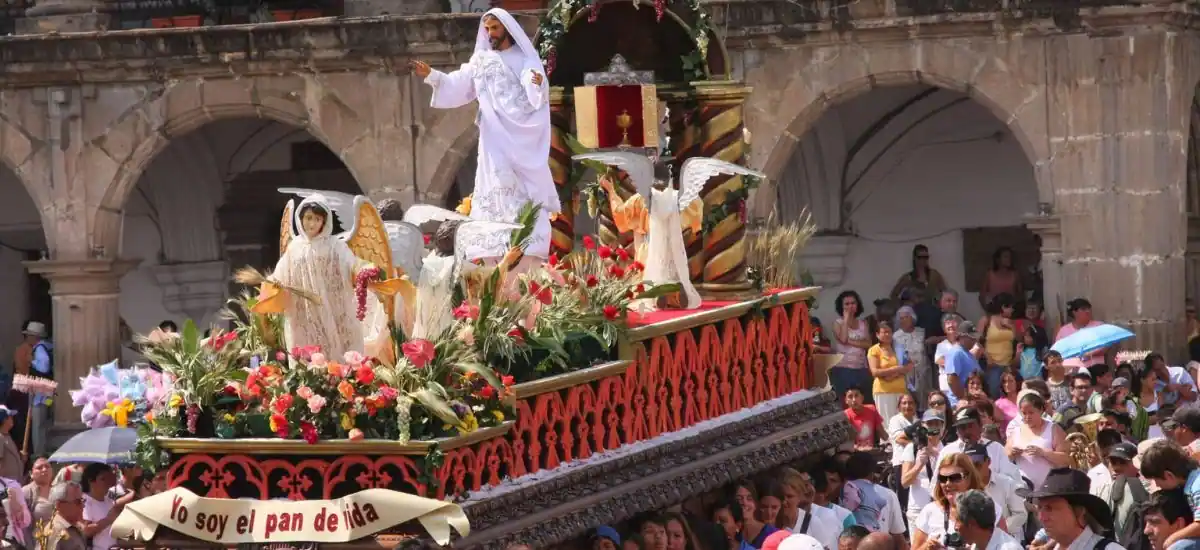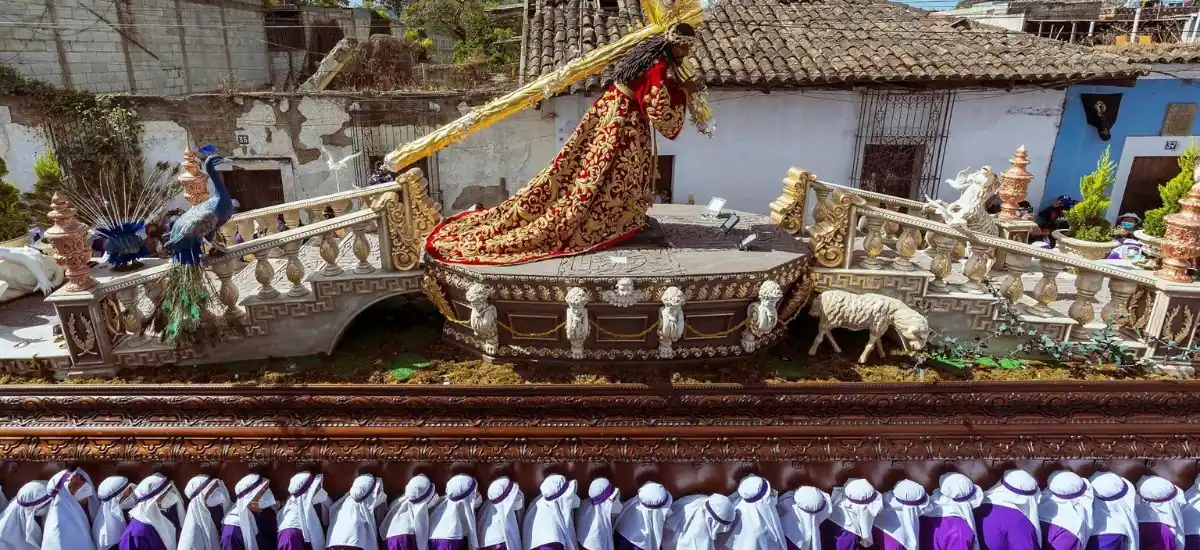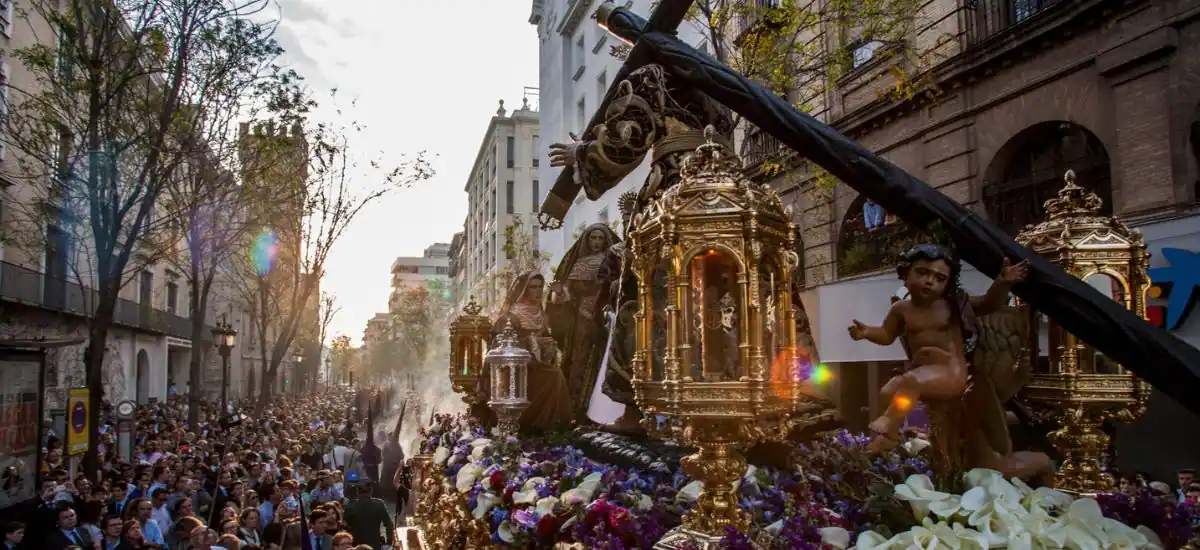Advertisement
12 Facts About Semana Santa
Advertisement
Semana Santa (Easter Week or Holy Week) is one of the happening celebrations, which is mostly celebrated in Spanish-speaking countries. From processions and garlands to music and food, the streets are filled with all sorts of unmissable things. So in this blog, we bring you 11 beautiful and interesting facts about Semana Santa.
Semana Santa Has A Lot Of Processions But It Isn’t All About Processions
The Vigil of Easter, also known as Holy Saturday is considered the last day of the Holy Week. This peaceful and quiet day is remembered and celebrated as the death of Jesus. Most Christians become a part of this remembrance by staying awake. Sources say that the vigil begins on the afternoon of Holy Saturday as the sun sets. Moreover, it continues until sunrise on Easter Sunday.
The vigil ends with the lighting of the candle which denotes the resurrection of Jesus. Apart from the processions, the trademark of this event is Easter eggs as it is considered a symbol of a new life form. This tradition has been followed since the early Mesopotamian Christians stain eggs with red color to denote the sacrifice and the bloodshed during the crucifixion.
Advertisement
Floats (Pasos): 1000 kg Procession Floats Are World-Class
During the Holy Week processions, an elaborate Paso or a float is physically carried along by the group of 40-50 men. These pasos mostly contain wooden statues of the Virgin Mary, Jesus, different characters, decorated lights, and flowers or other important Catholic saints. According to the sources, these floats weigh around 1000 kilograms. Calling these pasos beautiful is an understatement because the locals make each float unique to stand out in the crowd. You might see bands escorting the participants to different towns bringing brightness to the plazas and streets in the evening.
Many floats have long skirts as the locals cover the handles and staves giving an impression that the Paso is moving on its own. Every city has its own style of decorating its pasos that showcases what Semana Santa is for them. Some pasos even feature alter, lamps, candles, and other props. Furthermore, intricate details make floats more appealing and make the biblical figures stand out in the crowd.
Advertisement
Semana Santa Is Also Celebrated In Central And South America
You might be pondering: Is Semana Santa only a big thing in Spain? Well, no! Other countries like Central and South America, Peru, Mexico, and Guatemala also celebrate this day. But the processions may vary.Advertisement
Eating The Torrija Traditional Dessert Is A Must On Semana Santa
What is Torrij, you ask? Well, it is a kind of traditional dessert that can be enjoyed during the celebration. The main ingredient is a slice of bread which is dipped in egg and fried in a pan. Later on, the bread is soaked in wine or milk along with spices and honey. Some say that Torrija is a little similar to French toast which makes the locals crave more.Advertisement
Singing The Traditional Saeta During Holy Week Is A Thing
Singing Saeta in some southern Spanish communities is pretty common during the Holy Week processions. These religious songs are very emotional where the participants mourn the sufferings of Jesus Christ. Moreover, this music genre originated in flamenco folklore.
Advertisement
There Is A Tradition During Semana Santa, That Prisoner Are Freed From Jail
According to the sources, around 2 dozen jail inmates are freed on Easter in Spain. The tradition started in 1759 when war broke out in a Malaga prison. The inmates realized that Easter processions won’t take place due to a plague outbreak. In response to this, the inmates escaped from the jail and featured the image of Jesus on the streets, and returned to their prison cells. In those days, King Charles III was ruling the country. The act of the prisoners touched him completely, so every Easter, he decided to free the inmates. And to this day, the tradition still continues.Advertisement
If You Have A Faint Heart, Then The Processions Aren’t For You
The processions are said to be a religious act by the people to show their devotion to the creators. Most of the time, the Paso float is carried by penitents and brotherhoods where many churches and communities come together to participate. It takes a lot of time and practice to carry the floats continuously for 5 to 8 hours. That is why they choose participants who are strong, steady as well as dedicated to walking to and fro.
Furthermore, these processions have some sort of stories which includes the prediction of his own death, Jesus’ anointing in Bethany, and the mournful processions on Maundy Thursday. From Monday to Thursday, these three days are passionate and emotional for the locals.
Advertisement
Plays Play An Important Role Too In Semana Santa
Every year, Iztapalapa hosts passionate enactments where more than 3 million people take part. A particular committee among the group of residents is in charge of choosing who plays the role of Mother Mary or Christ. People who are married are removed from the leading role, so yes, traditional plays are taken very seriously.
Advertisement
In Semana, Santa Symbolisms Are Taken Seriously As Well
The first day of the Holy Week denotes the arrival of Jesus Christ in Jerusalem. On that day, locals greet their creator’s arrival with palm branches which symbolizes eternal life, peace, triumph, as well as victory. And as the days go by, the celebrations come to an end by telling the stories of Jesus’ final period of life. Andalusian cities also carry floats with Jesus on a donkey and depict what was mentioned in the holy scripture. So it is safe to say locals still value the symbolism that has been carried out since the early centuries.Advertisement
Maundy Thursday Is The Main Highlight Of Semana Santa
The beginning of three-day celebration starts on Maundy Thursday which gradually leads to Easter Sunday. It showcases the iconic Last Supper of Jesus and the apostles. In the supper, Christ shares with the apostles that one of them will betray him. There are 115 churches in Seville, the Andalusian capital. On that day, the participants carry all the processions towards the Cathedral and return to the local churches. Some processions can last for 5 hours and some can last up to 16 hours. Besides, the night between Holy Thursday and Good Friday is known as La Madruga. Another most watched procession throughout Andalusia is the Macarena.
Advertisement
Andalucia Features Traditional Celebrations During Semana Santa
If you want to experience the true celebration of Semana Santa, then Andalucia is undeniably the best destination for you. This place puts all its efforts to showcase the most creatively designed floats in the entire country. Although every city has its own way and culture of displaying the pasos, the vibe, as well as the traditional rituals in Andalucia, is unmatchable. The other notable cities for best Semana Santa celebrations include Valladolid, Segovia, Ávila, Salamanca, Zamora, León, Seville, and Malaga.
.png)




